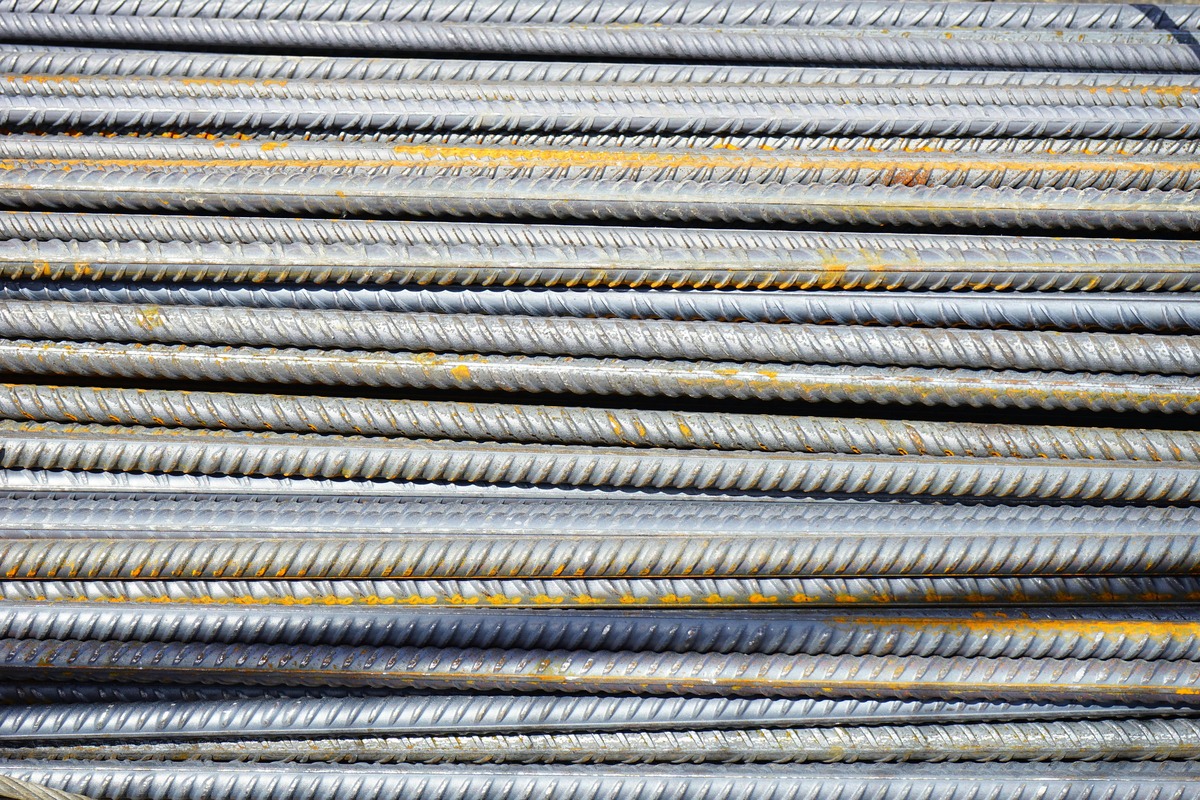Steel Market Outlook: Trends, Innovations, and Growth Projections (2023-2030)

Strong 8k brings an ultra-HD IPTV experience to your living room and your pocket.
The Steel Market remains a vital component of global industry, supporting construction, transportation, energy, and consumer goods. The demand for steel is driven by a mix of emerging and established markets, each with distinct needs and growth patterns. In 2023, the global steel market was valued at USD 1,175.10 billion and is expected to grow at a Compound Annual Growth Rate (CAGR) of 3.00%, reaching USD 1,445.20 billion by 2030. This article delves into the key drivers, types, applications, and trends shaping the steel market, with forecasts extending from 2024 to 2030.
Market Overview
The global steel market has continued to expand as urbanization, infrastructure development, and industrialization drive demand. Steel is valued for its versatility, strength, and durability, making it indispensable across a wide range of industries. In 2023, the market reached USD 1,175.10 billion, with projections indicating a growth to USD 1,445.20 billion by 2030. This steady rise reflects both demand for new construction and the replacement of outdated infrastructure.
Key Market Players
The global steel market is highly competitive, with a few major players dominating the industry and investing in technological advancements and production efficiencies to stay ahead. Key players include:
- China Baowu
- ArcelorMittal
- Nippon Steel
- Shagang Group
- POSCO
- HBIS Group
- ANSTEEL
- JFE Group
- Shandong Steel
- Tata Steel
These companies are not only leaders in production volume but are also actively investing in research and development to create new steel grades and enhance production efficiency. They serve a wide array of sectors, from automotive to infrastructure, and continue to expand operations globally to meet rising demands.
Market Segmentation
1. By Type
- Carbon Steel: Carbon steel, the most common type of steel, is used in applications where strength and durability are essential, such as in construction and tools.
- Alloy Steel: Alloy steel, which contains additional alloying elements like nickel and chromium, is preferred for applications requiring higher corrosion resistance, such as in transportation and energy industries.
2. By Application
- Construction: Steel is fundamental in construction, from structural frameworks to reinforcing bars.
- Automotive: Steel’s strength and durability make it ideal for automotive manufacturing, especially in frames and structural components.
- Transportation: Railways and shipping containers heavily rely on steel for its robustness and longevity.
- Energy: The energy sector uses steel in pipelines, drilling equipment, and renewable energy infrastructures like wind turbines.
- Packaging: Steel is widely used in packaging, particularly for food and beverage cans.
- Tools and Machinery: From basic hand tools to heavy machinery, steel is essential for its durability and ease of fabrication.
- Consumer Appliances: Steel’s appearance and strength make it a common choice in appliances such as refrigerators and washing machines.
- Metal Products: Steel is used in various metal products for its versatility and strength.
- Others: Other applications of steel include furniture, decorative items, and general manufacturing.
Market Growth Drivers
1. Rapid Urbanization and Infrastructure Development
Urbanization and infrastructure projects are major drivers of steel demand, especially in developing regions where cities are expanding rapidly. Steel is integral to constructing bridges, roads, railways, and other infrastructure projects, all of which support economic growth and urban development.
2. Growing Automotive and Transportation Sectors
Steel is essential in the automotive industry due to its combination of strength, safety, and affordability. As the automotive sector embraces lightweight yet high-strength materials, advanced high-strength steel (AHSS) is becoming popular for vehicle frames. The transportation industry, including railways, ships, and aviation, also relies heavily on steel due to its durability and cost-effectiveness.
3. Rising Demand for Renewable Energy Infrastructure
The renewable energy sector, particularly wind and solar energy, is a significant growth driver for the steel market. Steel is required in wind turbines, solar panel mounts, and other infrastructure. As countries commit to reducing their carbon footprint, investments in renewable energy infrastructure continue to rise, boosting demand for high-grade steel products.
4. Expansion of Consumer Goods Sector
The consumer goods sector, including household appliances, electronics, and packaging, relies on steel due to its durability and recyclability. Appliances such as washing machines, refrigerators, and kitchen equipment often incorporate steel in their designs for both functionality and aesthetic appeal.
Regional Analysis
1. Asia Pacific
Asia Pacific, led by China and India, is the largest consumer and producer of steel. Rapid industrialization and urbanization drive demand, especially in China, where government-led infrastructure projects support economic growth. India’s construction and automotive sectors are also key contributors, as the country is investing heavily in building and upgrading infrastructure.
2. North America
North America, especially the United States, has a high demand for steel across various sectors, including automotive, construction, and energy. The region’s commitment to energy independence has spurred investments in pipelines and renewable energy projects, driving the need for specialty steel products.
3. Europe
Europe’s steel market is driven by strong demand in the automotive and manufacturing sectors. European countries also have stringent environmental standards, which drive the need for advanced, sustainable steel production technologies. The region’s emphasis on green energy and infrastructure upgrades is further boosting steel demand.
4. Latin America
In Latin America, steel demand is primarily driven by infrastructure and industrial projects. The construction sector is expanding, particularly in Brazil and Mexico, where public and private investments in infrastructure are on the rise. The growing automotive industry also contributes to the demand for steel in this region.
5. Middle East & Africa
The Middle East and Africa are emerging markets for steel, driven by infrastructure projects and the construction of new urban developments. Investments in energy infrastructure, especially in oil-producing countries, are contributing to the demand for steel in pipelines and machinery.
Technological Advancements and Innovations
The steel industry is experiencing technological advancements that are making production more efficient and sustainable:
- Electric Arc Furnaces (EAFs): EAFs are more energy-efficient and environmentally friendly than traditional blast furnaces. The adoption of EAFs is increasing, particularly in North America and Europe.
- High-Strength Steel Alloys: Advances in metallurgy have led to the development of high-strength, lightweight steel alloys, especially for the automotive industry, which seeks to balance durability with fuel efficiency.
- Recycling and Sustainability: The steel industry is increasingly focused on recycling and sustainability. Steel is highly recyclable, and many manufacturers are investing in closed-loop production processes to minimize waste and reduce emissions.
Future Outlook
The steel market is projected to grow at a CAGR of 3.00% from 2024 to 2030, driven by ongoing investments in infrastructure, urbanization, and technological advancements in steel manufacturing. Steel will continue to play a pivotal role in global development, as emerging economies increase their infrastructure projects and developed countries upgrade existing structures. Additionally, the demand for steel in renewable energy projects, particularly wind turbines, is expected to rise as the global transition to clean energy accelerates.
Environmental concerns will continue to shape the steel industry. The adoption of greener production techniques, such as using hydrogen in place of coal, is gaining traction. As industries continue to innovate, environmentally friendly production practices may become a norm, influencing how steel is produced and used globally.
Conclusion
Steel remains essential to modern industry, supporting infrastructure, automotive, and consumer goods sectors worldwide. With a projected market value of USD 1,445.20 billion by 2030, the global steel market is set for steady growth as countries and companies invest in sustainable, durable materials for their projects. Technological advancements and the shift toward renewable energy will continue to drive the industry, making steel a cornerstone of industrial and economic development.
Browse More:
Gustavo Lima's arrest sparks debate about his artistic future
Note: IndiBlogHub features both user-submitted and editorial content. We do not verify third-party contributions. Read our Disclaimer and Privacy Policyfor details.







